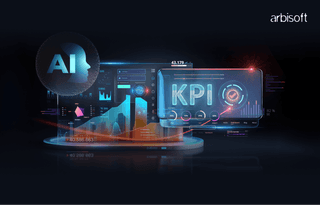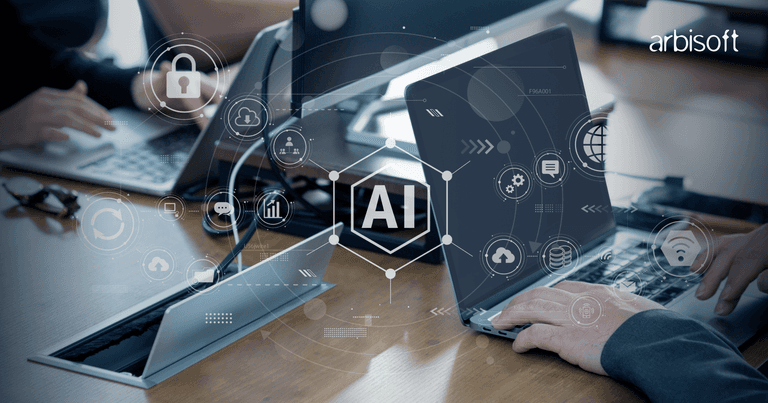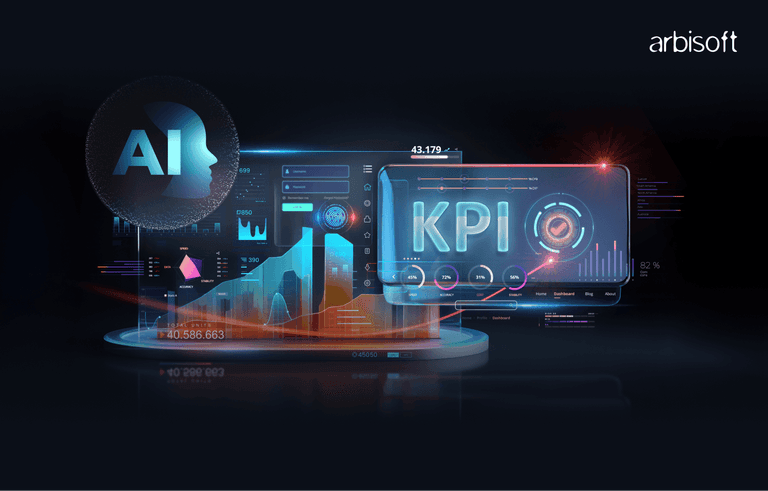We put excellence, value and quality above all - and it shows




A Technology Partnership That Goes Beyond Code

“Arbisoft has been my most trusted technology partner for now over 15 years. Arbisoft has very unique methods of recruiting and training, and the results demonstrate that. They have great teams, great positive attitudes and great communication.”
Understanding the Levels of AI: Comparing ANI, AGI, and ASI

From personal assistants like Siri to advanced learning systems, AI is continuously reshaping how we live and work daily. But did you know that there are different types of AI, each with unique capabilities? Understanding these variations is crucial for grasping the scope and potential of AI in our lives.
In this blog, we’ll explore the three main types of AI Artificial Narrow Intelligence (ANI), Artificial General Intelligence (AGI), and Artificial Superintelligence (ASI); and compare their abilities to give you a clear understanding of where we stand and what the future may hold.
A Quick Summary of Artificial Intelligence
Before diving into the types, let’s briefly understand what AI really is. Simply put, AI is the technology that enables machines to mimic human intelligence. Through machine learning algorithms, computers are taught to perform tasks without needing explicit instructions for every action. Think of it as teaching machines to be smart in their way.
For non-tech folks, AI may sound like robots doing complex tasks. In reality, it’s more about smart systems that can learn from data and make decisions. For businesses looking to harness these AI capabilities, leveraging robust ai development services can be the key to success. For example, AI helps us filter emails, drive cars, and even diagnose diseases. Experts define AI as a set of instructions or algorithms that allow machines to operate without human intervention, constantly improving based on experience.
Now, let’s move on to the three categories of AI and see what sets them apart.
Types of Artificial Intelligence
AI can be classified into three main categories based on its capabilities:
1. Artificial Narrow Intelligence (ANI)
2. Artificial General Intelligence (AGI)
3. Artificial Superintelligence (ASI)
These categories differ in terms of intelligence, capabilities, and potential to influence the world. Here’s a closer look at each.
Artificial Narrow Intelligence
ANI, or Weak AI, refers to AI systems designed to perform a specific task. These AI systems excel at one job but cannot go beyond their programming. Examples include virtual assistants like Siri, as well as chatbots such as an ai chatbot solution for ecommerce designed to streamline customer interactions, image recognition systems, and self-driving cars.
These systems use algorithms to learn from large datasets and identify patterns, but they don’t understand the context or meaning behind the tasks. For example, a facial recognition tool can identify your face but doesn't "know" you. Similarly, language translation systems can convert text from one language to another but struggle with capturing cultural nuances or emotions.
Despite these limitations, ANI plays a significant role in our daily lives, improving efficiency and productivity across various industries. However, ANI lacks flexibility and can't adapt to new tasks beyond its initial design.
Three common examples of ANI include AlphaGo, Siri, and ChatGPT.
Artificial General Intelligence
Unlike ANI, AGI, often called Strong AI, aims to replicate human intelligence in its entirety. AGI systems would not only perform tasks but understand, learn, and think in the same way humans do. These systems could potentially solve complex problems, understand emotions, and make decisions based on real-world context.
AGI is often viewed as the next big step in AI evolution, allowing machines to perform any task that a human can. Although we have made significant progress with ANI, AGI remains a future goal. Many researchers and tech companies are heavily investing in its development, hoping to create machines that can truly think and act like humans.
For example, big tech companies, such as Microsoft, are actively working on AGI, pouring billions into this ambitious goal. Current AI systems, including many Large Language Models, may pass the Turing Test, the measure of whether AI can mimic human thought, but they still don’t possess the self-awareness and reasoning power AGI would require.
The potential for AGI is enormous—imagine machines that can code themselves, understand complex natural language, and improve systems autonomously, with breakthroughs driven by cutting-edge ai and data science services. While this future seems promising, it also presents ethical dilemmas, particularly concerning job displacement and the nature of consciousness in machines.
Artificial Superintelligence
ASI is a theoretical concept where machines surpass human intelligence in all areas; logic, reasoning, creativity, and even emotional intelligence. While this type of AI doesn’t exist yet, many researchers believe that achieving AGI could eventually lead to ASI.
The idea of ASI excites many because of its potential to solve the world’s most complex problems, from climate change to global health crises. But it also raises concerns about control and ethics. Could machines become so intelligent that we struggle to keep up or even lose control? This notion is sometimes referred to as the technological singularity.
If developed responsibly, ASI could revolutionize science, medicine, and space exploration. However, it could also pose risks, making it important to tread carefully as we advance in AI research.
Comparing ANI, AGI, and ASI
Though all three types of AI are designed to perform tasks that mimic human intelligence, they differ widely in their scope and abilities.
Aspect | ANI | AGI | ASI |
| Capabilities | Specializes in a specific task, limited to predefined functions | Mimics human intelligence across all tasks; capable of learning and reasoning | Surpasses human intelligence in all fields, with cognitive abilities far beyond human-level |
| Current Status | Already widely implemented (e.g., AI in image recognition, chatbots) | Hypothetical but heavily researched; not yet achieved | Entirely theoretical and hypothetical; no current examples |
| Examples | Self-driving cars, recommendation algorithms (e.g., Netflix, Amazon) | A machine capable of reasoning, understanding, and learning like humans | An entity that could solve all intellectual problems humans face, and even those beyond human understanding |
| Learning Ability | Pre-programmed with limited adaptability in specific areas | Can learn from diverse experiences like a human | Capable of autonomous learning and self-improvement exponentially beyond humans |
| Decision-Making | Follows programmed rules, no self-awareness | Makes autonomous, complex decisions based on reasoning | Far superior to human decision-making, possibly incomprehensible to humans |
| Scope | Narrow, limited to one specific domain | Generalized, with capabilities across a wide range of tasks | All-encompassing, dominates every field of intelligence |
| Risks | Low risk due to lack of autonomy | Ethical concerns regarding control, safety, and societal impact | Potential existential risk if it surpasses human control and understanding |
| Potential Benefits | Enhances efficiency in narrow tasks (e.g., automation, healthcare) | Could transform industries, solve complex global challenges | Could revolutionize science, economics, and governance beyond human potential |
In summary, ANI is what we have today, but it has limitations in adaptability and learning. AGI, though still under development, holds the potential to change how we interact with machines. ASI, while a distant goal, could transform humanity itself; for better or worse.
The Road Ahead for AI
We currently live in the age of ANI, where machines excel at specific tasks. But as research continues, we might soon witness the rise of AGI and, eventually, ASI. This raises questions about control, ethics, and the broader impact of AI on society. While the potential benefits are vast, it’s essential to proceed with caution, ensuring that these technologies align with our values and goals.
So, do you think AGI is around the corner? Or are we still far from reaching this level of intelligence?
























